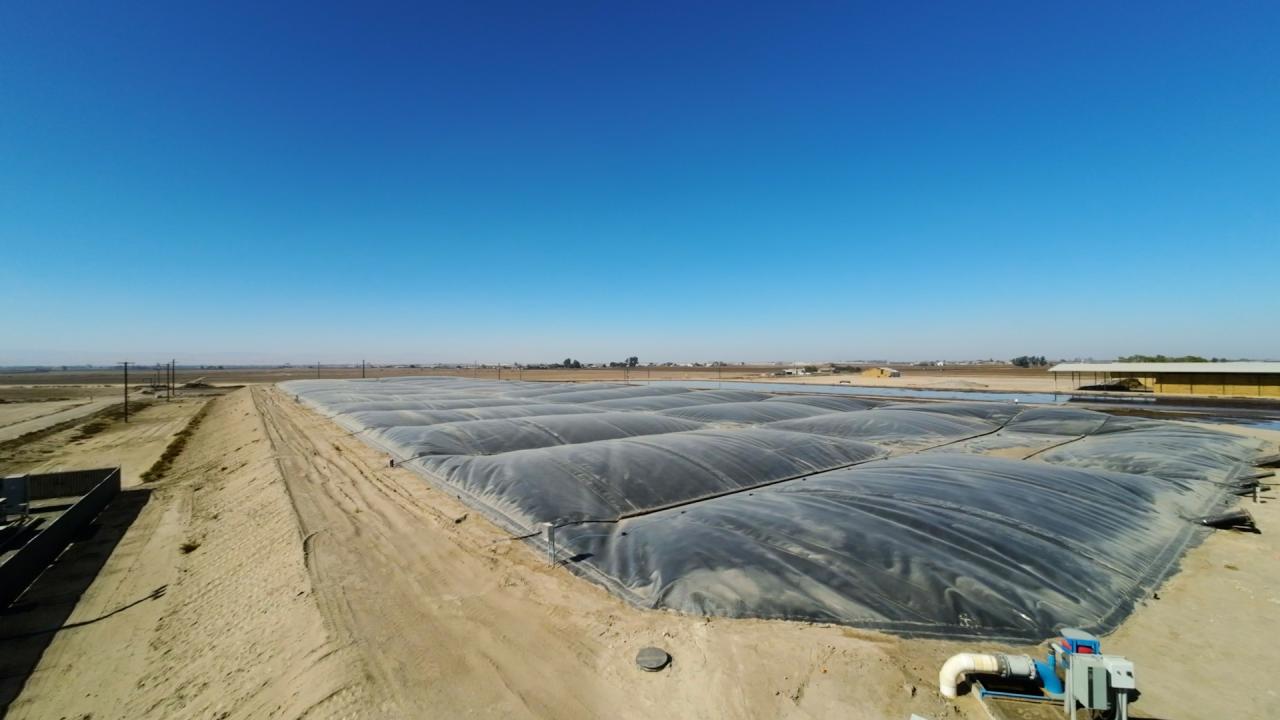
CLEAR Center Director Dr. Frank Mitloehner Joins Radio Show to Discuss Future of Dairy Farming in California
In California there are approximately 1.68 million cows that produce more than 41 billion pounds of milk each year, but how sustainable is the industry given the state’s stringent air regulations?
This was the question that CLEAR Center Director Dr. Frank Mitloehner tackled when he joined host Larry Mantle on “AirTalk,” a daily show on LAist, an independent, nonprofit newsroom that is home to L.A.’s largest National Public Radio (NPR) station.
Regulations and the dairy industry
Also on the program was Michael Boccadoro, Executive Director of Dairy Cares, a non-profit that advocates for dairy farming and long-term sustainability. He opened the show by speaking about the challenge dairy farms have of producing more milk and dairy products, while simultaneously trying to reduce their methane emissions.
California is requiring its dairy industry to reduce methane emissions by 40% by 2030, compared to 2013 levels. But California isn’t imposing penalties to achieve these results. Rather, it’s a voluntary incentive approach that has proven to be effective.
One of those programs is the California Department of Food and Agriculture’s Dairy Digester Research and Development Program (DDRDP) which provides financial assistance for the installation of dairy digesters in California, resulting in reduced greenhouse gas emissions. Another is the Low Carbon Fuel Standard by the California Air Resources Board (CARB) where dairy farmers can generate credits by using anaerobic digesters to capture the methane that seeps out of their manure lagoons and then turn it into renewable natural gas.
Boccadoro discussed the recent decision by CARB to eventually phase out carbon credits that were dedicated to farms that were lowering methane emissions from the cow manure produced on dairy farms. The question is by phasing out these credits, what will it mean to the state’s dairies?
“By CARB phasing out of these credits, it is actually positive, in the fact that the projects that are currently operating in California and any new projects from now until 2030 will have 20 to 30 years of crediting period left for the low carbon fuel standard program, through 2050,” Boccadoro said. “We’re happy that CARB has doubled down on the incentive-based program and allowed for the continued investment in these important projects that are dramatically reducing methane in California.”
Boccadoro also spoke about some of the efficiencies at dairies, which are producing more milk with less cows. How is this possible? Boccadoro explained this is through innovative practices related to cow comfort, improved genetics and a superior nutrition program.
“Cows are like elite athletes,” Boccadoro said. “And we have nutritionists for the cows in California that develop a super nutritious diet for them that allows them to perform and produce more milk. Much like an athlete who has a great diet, they will perform better on the field.”
Incentive-based approach to air regulations
Continuing the talk about air regulations and their effect on dairy farmers here in California, the discussion moved to Mitloehner, who said he felt the relationship between the state and the dairy industry has been a productive one over the years, mainly because of the incentive-based approach the state has chosen to take, which he refers to as “the carrot approach.”
“The carrot approach is where the state says we want our farmers to reduce emissions, but we know it costs money, so we need to incentivize it, financially and that has worked,” said Mitloehner.
Mitloehner added that he visited 26 countries last year and spoke to other governments about California’s incentive-based approach because other countries wanted to know why California dairy farmers have been so successful in reducing emissions on their farms. Other countries tend to approach emission reductions differently, using what Mitloehner called “the cane approach.”
“Other countries use fines, regulations and taxes and that isn’t working,” said Mitloehner. “Here it’s about working with, and not against our agriculture sector.”
Cow power and the sustainability of California dairies
Mitloehner then explained what a methane digester is, discussed why they are so effective at reducing methane emissions on dairy farms and why making energy from waste has gotten the public’s attention in such a big way.
“We are taking something that was a problem before and we are not preventing it from going in the air and we are trapping it and utilizing the energy content of that gas,” explained Mitloehner. “Therefore, we are converting a liability into an asset, and we are making it in a way that there are revenues to be made.”
Mitloehner capped off the discussion by answering the question of, “Does dairy farming have a long-term future in California?”
“I have no doubt, it does,” he confidently stated.
His confidence stems from the fact that California dairies support a sustainable food cycle and play an important part in the state’s agriculture ecosystem, in great part due to a cow’s unique digestive abilities.
Cows have a rumen, which is part of their four-chambered stomach which is full of microbes that break down tough fibers found in byproducts like cotton seed hulls, almond hulls and citrus pulp, all of which aren’t edible to anyone except cows, who then convert these byproducts into energy and nutrients in their bodies. And in turn they will produce milk and meat, products that help to feed a growing population.
“When you compare—we make the most use of efficiencies but also the use of byproducts of more than 400 specialty crops—the largest assortment of agricultural commodities is grown right here in CA.,” Mitloehner said. “And the dairy industry is an integral part of recycling some of those things that would otherwise end up in landfills.”
Listen to the entire show here.
